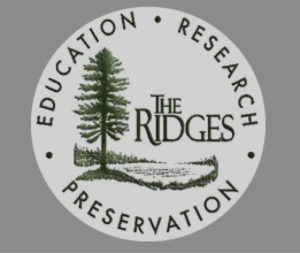Grant Will Restore Door County Wetlands
- Share
- Tweet
- Pin
- Share
The Nature Conservancy was awarded a $186,200 grant from the Sustain Our Great Lakes program to hire a four-person seasonal crew for two years to control invasive species and restore and enhance coastal wetlands within the Door Peninsula Coastal Wetlands Ramsar Site, a 11,443-acre wetland complex designated as a Wetland of International Importance by the Ramsar Convention in 2015.
The grant will be matched with additional funding from the Conservancy and The Ridges Sanctuary, as well as volunteer hours donated to the project, to bring the total funding for the project to more than $413,600.
“We’re very excited about this grant,” said Kari Hagenow, Nature Conservancy land steward and coordinator of the Door County Invasive Species Team, “because it will allow us to make real progress in removing some of the worst populations of six non-native species that are invading the coastal wetlands in our Ramsar Wetlands area. It also gives us the flexibility to move quickly when we find a new invasive that requires immediate attention.”
Starting in June of 2017, the crew will inventory the Door Peninsula Coastal Wetlands Ramsar site to map invasive species populations and prioritize the areas under greatest threat from Japanese knotweed, European marsh thistle, Phragmites, reed canary grass, glossy buckthorn and narrow-leaved cattail, all of which are known to be present. They will also map populations of any new invasive species they find.
“While we’ve been removing invasive species on the Door Peninsula for many years now,” said Hagenow, “this is the first time we will really be able to take a landscape approach to this work. This grant gives us the ability to look across multiple ownerships and see where the big problem areas are, areas we could have missed because we were each looking at our own land rather than at the Ramsar Wetlands site as a whole.”
Mink River Estuary, North Bay, Toft Point, Spike Horn Bay and Cana Island natural areas are all part of the Ramsar Wetlands site and where the work will take place. The lands are owned by Door County, University of Wisconsin-Green Bay, The Nature Conservancy, Door County Land Trust, The Ridges Sanctuary and the Wisconsin Department of Natural Resources.
“Invasive species pose a huge threat to wetlands throughout Wisconsin, but particularly in globally-important wetlands like those in Door County,” said Katie Beilfuss, outreach programs director with the Wisconsin Wetlands Association. “Work done by The Nature Conservancy and other community partners to combat invasive species is critical to keeping these wetlands healthy not only for the rare species that live there but also for the many benefits these wetlands provide to the communities of Door County.”
The Sustain Our Great Lakes grant program is a public–private partnership that supports habitat restoration in the Great Lakes basin. Administered by the National Fish and Wildlife Foundation, a significant portion of program funding is provided by the Great Lakes Restoration Initiative (GLRI), a federal program designed to protect, restore and enhance the Great Lakes ecosystem.
“Sustain Our Great Lakes and GLRI have been critical partners in protecting the wetlands that provide important wildlife habitat, especially for waterfowl and other birds,” said Nicole Van Helden, who directs The Nature Conservancy’s work in northeast Wisconsin. “These same wetlands also provide many benefits to people including clean water, flood control, ground water replenishment and places to enjoy the outdoors.”

